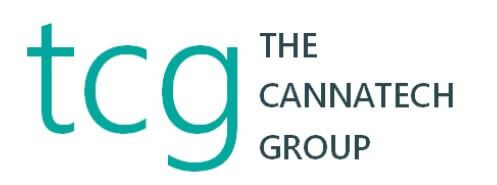Legal Cannabis has become a major phenomenon in the US over the past 10 years, with New York and New Mexico joining this month. With Cannabis becoming legal in more and more states many new regulations are coming into effect. With these new rules and regulations licensed cannabis businesses have learned to operate in accordance with these relatively stringent regulations which differ from state to state. One of the main regulations is cannabis packaging and labeling. With years and years of inconsistent packaging and labeling rules across states, much debate and frustration has arose amongst the industry. Mike Buchanan at CloubBox joins 420MSP to discuss Cannabis labeling and what you need to know.
Video Transaction
Harry Brelsford 0:00 Hey 420 MSP. This is special. I’m with Mike Buchanan at CloudBox. And we have learned in rehearsal. Mike’s currently in the UK trying his darndest to get back to North America. Mike, how you doing? Otherwise?
Mike Buchanan 0:53 I’m fine. Just missing Florida and my trips over to the US. But you know, we see light at the end of the tunnel here in the UK.
Harry Brelsford 1:03 Yep, exactly. So but we’re really here to talk about your participation in the the cannabis vertical, which is certainly what we cover you and I met through the RSPA. I frequently mentioned that organization. And you are in the label printing business. I’m over simplifying it. So let me turn it over to you. Sir, what is your line of work? What does your company do?
Mike Buchanan 1:29 Well, the the original company in the UK was a manufacturer of a whole range of different it peripherals for one of our better phrase, back in about 2008 2009. We were approached by Zebra Technologies in the UK to weather one of the little keypad devices we had could be attached to that label printers to come up with an entry level labeling solution for tier two tier three retailers or those retailers that just wanted a simple standalone solution. So you know, we developed that and we rolled that out hundreds 1000s of them around the world through our partners with with zebra and others. And but we we decided that we needed a more powerful and a more flexible device. So we developed the main 70 print pad. And that’s really got a full unit system on a chip in there with an SQL database. And what that means is it’s really a powerful, flexible little device that can hold a lot of data and pull it back and populate a label. We, we did that because we saw that the needs of labeling was becoming more complex, not just because of the whole area of food allergens, and ingredients and things like that, but also what was happening in the cannabis marketplace, particularly in the US and the need for all the regulatory information that needed to be done there. So it’s a pretty powerful little device, we’ve got a customer in Kentucky, who’s got the full point of sales skew database stored on them, which has got something like 440,000 odd line items on there. And they’ll get an instant recall. So it’s pretty powerful for a little device that can be a complete standalone with a desktop label printer, and a barcode scanner attached. So that they can they can print price labels, price, markdown labels, really any kind of product shelf age labels that they want. After developing that, you know, people were asking as well. What about doing an app? And I thought, Well, yeah, we could do an app. But But we took a different sort of strategic approach to this, we develop what we call the print box, which is essentially the same approach except it’s all in a little box. Again, system on a chip running Linux, running a full SQL database, but again, with our labeling application in there. And the way that you access the label templates on that system is through any smart device with a browser. So that can be a smartphone, it can be a tablet. And, or it can be a PC. So again, the idea, the whole philosophy behind this for us is to bring labeling to those retailers and hospitality organizations where they perhaps don’t have the full infrastructure there. They might be looking for something to stand alone, which they can do with a print pad and a printer or they can now do with a print board. In the back office, with Wi Fi connected to your smartphone with a mobile printer on now. And you know, as long as you’ve got access on the same network, and the the user ID and the password, you can log on. And you can have access to any number of the templates that are on the print box. That kind of unique thing, there is nothing on no software on your device. So if it gets lost, or, or broken, or dare I say stolen, then you don’t have the hassle of having to get another device and load up a software stack, etc, etc. You just need to find another device with a browser, open up your browser, get yourself authenticated in your bag, and away printing labels, again with your mobile network printer. And, of course, the other thing is if you’ve already got iPads or Android tablets, and they’re doing saving the sale or queue busting or whatever, all you need to do to access the labeling is open up a browser, and you’ve got access there. So it’s it’s an incremental, that can be added to an existing infrastructure with devices there as well. And the software is designed to be standalone on its own setting in a store, or it can be networked. You You can you can have a common database and store that a number of users are accessing for templates and data etc. or indeed, it can be in the cloud. So that, you know, if you’re a larger organization and you want one set of data that everybody accesses, provided, you’ve got the network infrastructure, then this device will access the data over your network, and populate labels with the time product information, regulatory details, prices, barcodes, etc, whatever set up in the database. And you know, it can integrate also in pull data from your corporate data system. So, you know, your whole idea of app integration from your corporate system, we can feed that right down to printing the labels in store.
Harry Brelsford 7:18 All right, well, hey, let’s end on this. So let’s talk about how you work with partners. Because you know, the that’s that’s part of our DNA managed services providers are channel partners, there’s other partner types. I’ll turn it over to you, how do you work with partners?
Mike Buchanan 7:36 Again, our philosophy has always been, you know, do what you’re good at. And what we’re good at is developing hardware, and now software. And so you know, those solutions together, we we only sell through partners. So in UK, Europe, us now, we’ve got partners who will take our solutions, they will add in the printer, they will add in the media, they’ll add in any services round about that. And in fact, you know, we’ve got a solution with a partner going in this week, into a C store at a gas station, just outside Chicago. So you know, I’m saying here in the UK, but I’ve got full, full trust in the partner in the US that we work with, for them to take our products and go and add their value.
Harry Brelsford 8:25 Alright. And then maybe one other question. I’m just curious, but how long have you participated in the RSPA?
Mike Buchanan 8:36 I think this is so I think this is this will be our fifth year attending the conference. You know, when I when I started out in this, this adventure, I was at an RSPA conference. I think it was the second one I attended. And it was then that some of the print manufacturers and some of the partners, we were talking to said, you know, you guys should be looking at the cannabis sector because of all the regulatory requirement. Accra. And, and so my plan had to had been last year to spend more time in the US talking to partners attending events, but well, we all know what happened to 2020 it was it was gone Benin gone. Yes, sir. So you know where we are. As you said Harvey last week, you know, if you’re going to play in this, this market you need you need somebody you need a partner who knows the market. And, you know, I’m dangerous enough to know a bit about living and working in the US because I’ve lived out in the past. But, you know, I know that in specific market sectors in specific countries. You got to have local partners with local knowledge.
Harry Brelsford 9:59 Yeah, you And that’s that’s a whole nother interview for another time. But Mike, I sure appreciate you joining us and hey, everything helps everything. So keep up the good fight, folks. Cloudboxinc.com Cloud boxinc.com to get more information. Thank you, sir.
Mike Buchanan 10:21 Thank you.








